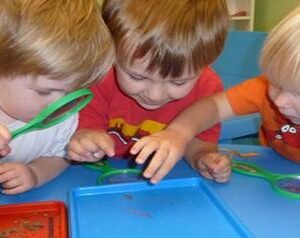At Pacesetters, our educators create a developmentally appropriate, engaging learning environment that encourages children in our care to become confident, successful, lifelong learners. At Pacesetters, children participate within open, engaging, and responsive environments where exploration and play are encouraged and purposefully planned. Varying activities and learning centers like:
Circle Time
Circle time, learning stories and observation are ways to determine and document children’s learning dispositions within daily experiences of care, play, learning, and development. Circle time is when all children in the group come together with their teacher to share ideas and learn from one another. It is a time to develop a sense of the whole group.
During circle time, children listen to storybooks, share favourite parts of the story, and retell the story. Children show and talk about an item unique to them. They sing and learn songs about the calendar and participate in various learning experiences and/or topics of interest. Children learn to listen to others and gain confidence speaking in a group. They are also given the right to pass if they do not want to talk. School-aged children are provided with learning and exploring based on their age.
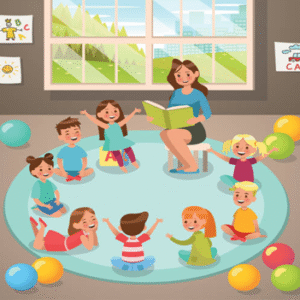
Block Building Center
During free time play, blocks are provided for children to play with as this helps children develop gross and fine motor skills. The nature of this play gives children the ability to experiment with shapes, sizes, and space. It also helps children develop critical thinking skills, decision-making skills, social skills, language skills and independence.

Drama Center
Drama centre is set up during free time play or centre time activities. It is a play area where children can use their imagination, interact with other children and express themselves. The drama center has different costumes, and children decide what they want to be during the playtime. They can be doctors, nurses, cashiers in a grocery store, community helpers like a policeman, firefighter, teacher in a classroom etc. The drama center helps children use their imagination skills, develop creative skills, language skills, communication/social skills, decision-making and negotiation skills in a group.
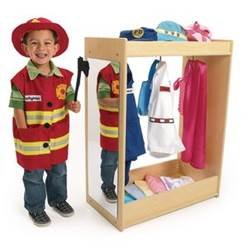
Puzzles
Children are curious and want to solve exciting play problems when presented before them. Attractive colourful puzzles keep children engaged on task as they persistently get the mysteries fixed. The nature of this activity provides spontaneous cognitive and manipulative learning experiences for the child. It promotes their critical thinking skills and decision-making skills. It enhances cognitive development, creativity, design and art skills, and language development in a group setting.
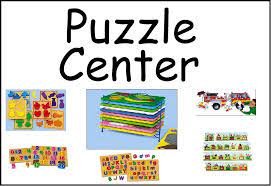

Music and Movement
Children explore and play with simple musical instruments like xylophone, drums, shakers, rattles, pot lids, cymbals, rhythm sticks, bells, chimes, triangles, etc. Children play these instruments not to gain expertise but to develop a whole host of skills playing and experimenting with the instruments.
Skills such as fine motor skills: children learn to coordinate their fingers and develop control to produce sound. Gross motor skills: Musical instrument sounds can develop the body’s large muscles by incorporating movement into sound. Children march or dance to the rhythm of the sounds they produce with their instruments. Cause and effect: these are skills children learn in their early years. Cause and effect is a relationship between two things; children learn that “when I do this, then this happens.” It is an essential Cognitive skill.
They also listen to a variety of music and dance to the music. This fosters movement coordination and body and self-regulation, rhythm awareness, language development and much more. This activity helps children understand how music piece is created and played.
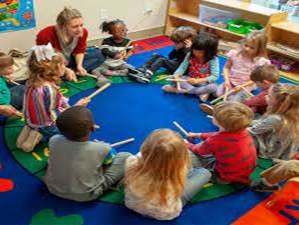
Arts and Crafts
Children are provided with various art and craft materials to do independent work overseen by teachers. Some art and craft activities are teacher-facilitated and supervised. Children’s independent art and craftwork promotes creativity, child self-expression and self-esteem. Arts and crafts activities engage children’s senses in open-ended play and support the development of cognitive, social-emotional and multi-sensory skills.
Arts and crafts projects help children develop their fine motor skills. Children’s handling of safety scissors to cut straight lines, colouring with crayons, painting with a paintbrush, practicing drawing shapes helps to strengthen the muscles and improve control of their fine motor skills.
Arts and crafts also allow children to expand their essential vocabularies when they learn the names of different shapes, colours, and materials without seeming like a chore or a memorization exercise. These skills carry over into many other activities and are essential in giving children a head start in school.
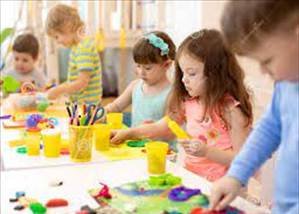
Sensory Activities
This center is an excellent area for children to experiment and explore with their hands while using the sense of touch, sight, smell, and hearing except for taste in the sensory center during activities. Texture and tactile materials are provided for children in the sensory center. A Sand and water table, with its content, changed weekly to different sensory items like rice, beans, wood chip, paper strips, fabric pieces, solid small assorted toys, etc. Also provided for sensory are playdough, calming bottles and a balance beam.
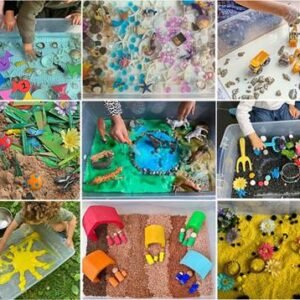
STEM
Children are introduced to different STEM activities. STEM is Science, Technology, Engineering and Math. The Arts for STEM is great to introduce our children into the world of science, technology, engineering and math. Children are engaged with different science activities like building bridges and boats and experimenting with objects that float and sink. Children develop engineering skills while constructing basic shapes out of marshmallows and toothpicks, change of state: – freezing water into ice and watching it melt by adding salt. Plant seeds, watch them sprout and do more cool science experiments. Children learn about primary and secondary colours with LED Light tables and accessories.
